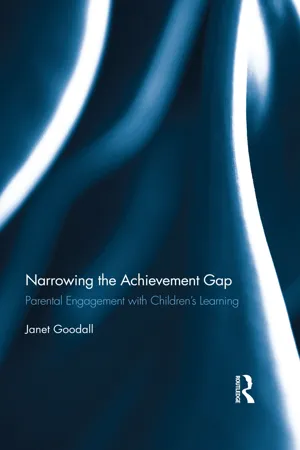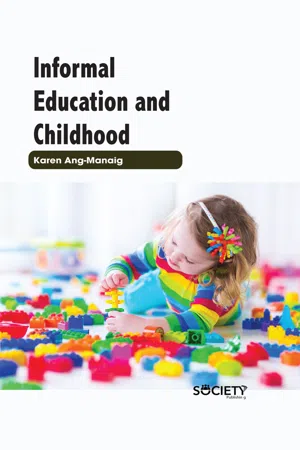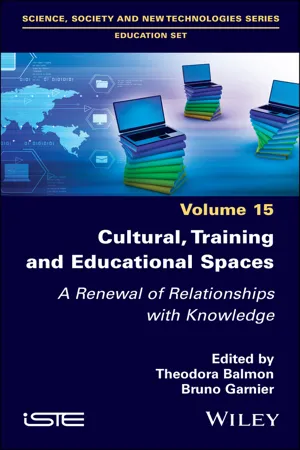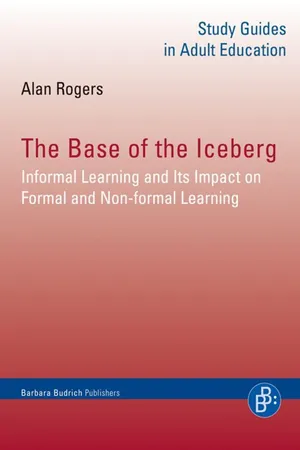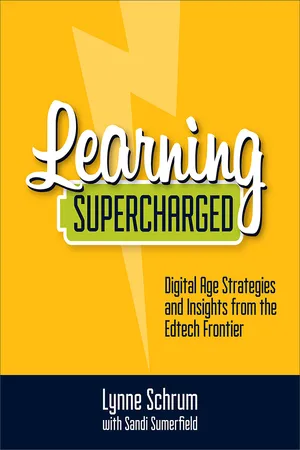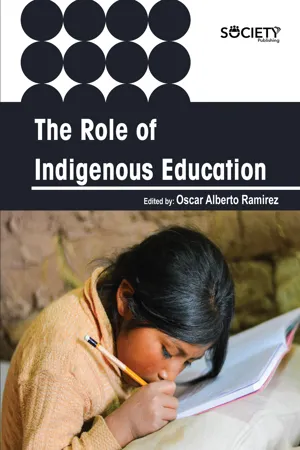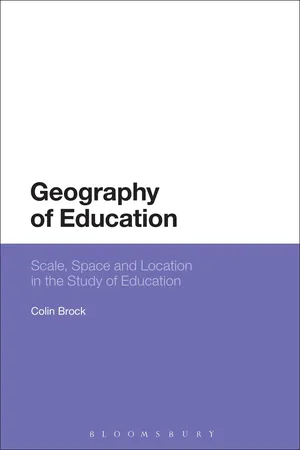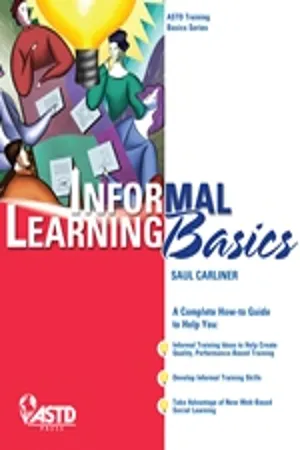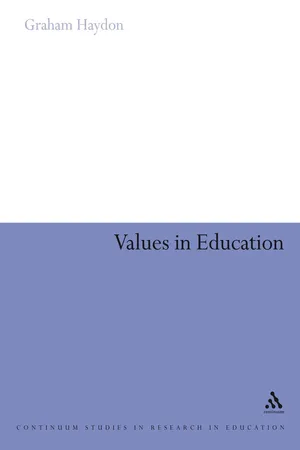Social Sciences
Formal and Informal Education
Formal education refers to structured, institutionalized learning provided in schools and universities, leading to recognized qualifications. Informal education, on the other hand, occurs outside of traditional educational settings and is often experiential and spontaneous, such as learning from family, community, or personal experiences. Both forms of education play crucial roles in shaping individuals' knowledge, skills, and values.
Written by Perlego with AI-assistance
Related key terms
1 of 5
10 Key excerpts on "Formal and Informal Education"
- eBook - ePub
Narrowing the Achievement Gap
Parental Engagement with Children's Learning
- Janet Goodall(Author)
- 2017(Publication Date)
- Routledge(Publisher)
Sidorkin (2011) points out the possible conflict here in that societies which style themselves as democratic may be anything but in relation to children and schooling. Most industrialised countries compel children by law to be involved in schooling of some kind, without reference to the wishes of the child in question. However, this still does not constitute indoctrination as there is no attempt to instil knowledge or belief by force or overriding of the agency of the learner – children are not compelled by law to learn but rather to attend (school). This leads to a final adaptation of Peters’s criteria such that education is a process carried out in a worthwhile manner which respects the agency of the learner and which concerns something more than mere technical skill. This then leads us to examine a differentiation between Formal and Informal Education. Formal and Informal Education Simply put, formal education (as a subset of education as a whole) takes place in formalised institutions, and informal education does not (Brookfield 1986, Cox et al. 2000, Rogers 2000, Tuijnman and Bostrõm 2002). These formal institutions take in the obvious candidates, such as schools, colleges and universities. Arguably, however, education is ‘formal’ whenever it follows particular, set formula or is delivered under the aegis of any group which sees itself as broadly educative. In this way, one might speak of formal education taking place within groups such as the Girl Guides and the Boy Scouts, with their stepped system of learning leading to awards (badges); the St John’s ambulance society, which instructs volunteers in various methods of first aid; and even the Masons, with lore and ritual to be learned by initiates - eBook - PDF
Sociology
Made Simple
- Jane L. Thompson(Author)
- 2013(Publication Date)
- Made Simple(Publisher)
EDUCATION Informal and Formal Education Most of the things which people learn, from the second they are born, throughout the many phases of their lives and in the varied and numerous situations in which they find themselves, happen 'outside' the formal education system, from people not usually regarded as teachers and through experiences not always defined as educational. From the very moment of birth, children begin to learn and develop the behaviour, values and attitudes which are considered to be accept-able in our society. The family is the first context in which learning occurs, and parents and other relatives act as the first 'teachers'. As the child grows older friends and neighbours become more influential, as do adult contacts and work mates in later life. All of these interper-sonal relationships provide the opportunities for individuals to learn information, acquire knowledge and skills and modify or change their behaviour as a consequence. But it is not just a matter of personal relationships. Teaching others and learning from them, in the many and varied encounters of every-day life, happens in a social context. Put simply, society has already decided a good deal of what it considers to be 'appropriate' behaviour, attitudes and values, and uses a variety of methods to ensure that these become accepted by and get transmitted to new recruits. Other agencies of 'informal education' besides the family and personal con-tacts in different groups and at work, are influences like the media, cultural traditions and customs, and the kind of moral guidehnes, legal rules and social values enshrined in the ideology and practice of legal, rehgious, economic and social welfare systems in society. None of these is a natural or neutral operation, though. - eBook - PDF
- Karen Ang Manaig(Author)
- 2019(Publication Date)
- Society Publishing(Publisher)
Informal education can be the activities such as trips to museums, science centers, zoos, aquariums or planetariums. All of these places are regarded as informal settings as they all are present outside of the area of classroom or school or college. A lot of people find field trips to be unbeneficial and pointless to students at any age. Many will contend that informal education is only supportive when the students have prior knowledge of the subject from the formal education before going out on any trips for learning new things. The impact of prior knowledge in the field of learning is considered to be of major importance in framing effective programs of education. Informal education is very common for the science related subjects. Most of the students cannot really understand the scientific principles by just reading Informal Education and Childhood 22 out a book as the content can be very boring. Going on field trips to the informal settings supports what students actually learn from their teachers or educators and help them understand the topic in much better way. 1.7. FORMAL VS. INFORMAL EDUCATION Formal education is a classroom-based education which is provided by well-experienced and trained teachers. Informal education takes place outside of the classroom, in after-school programs, libraries, museums, community-based organizations, or at home (Figure 1.9). Figure 1.9: Formal education: It takes place inside a classroom of a school or college. Source: https://www.modernghana.com/blogs/785657/top-four-stages-of-formal-education.html The key differences between the Formal and Informal Education are: Usually, classrooms have the same kids as well as same teachers every day. Whereas, after-school programs are generally drop-in, so the attendance is not consistent. The activities inside of a classroom can last for a great number of days. - eBook - PDF
Cultural, Training and Educational Spaces
A Renewal of Relationships with Knowledge
- Theodora Balmon, Bruno Garnier(Authors)
- 2023(Publication Date)
- Wiley-ISTE(Publisher)
This question is particularly interesting, in light of the social hierarchy of knowledge that tends to give major importance to school, considered the preferred – and for some, exclusive – place of learning. In this discriminatory logic, the primacy of the school leads to the minimization of, and even contempt for, everything that can be learned outside the school setting. From this point of view, and to counteract this school-centered perspective, UNESCO has been promoting different forms of knowledge for many years and has invited the multiplication of learning spaces. This institution dedicated to education, culture and science in the service of a better knowledge and recognition of others has produced definitions of “formal”, “informal” and “non-formal” education, in relation to aid programs for developing or emerging countries. These definitions, accompanied by recommendations and proposals for action, have made it possible to become aware of the consistency of informal education and have contributed to its structuring and revaluation. The 2012 report, UNESCO Guidelines on the Recognition, Validation and Accreditation of the Outcomes of Non-formal and Informal Learning, clearly highlights both the need for and the benefits of informal education. Informal education is indeed necessary, because it opens a field of possibilities for young people who would not be in proximity to or in connivance with the school culture. It is a way of extending the range of knowledge without limiting it to school. Informal education also brings a certain benefit, because it recognizes other forms of access to knowledge, and even encourages them. It is therefore necessary to go beyond the sterile opposition that would involve separating Formal and Informal Education, at the risk of producing discrimination and a rejection that would be very harmful for the learners. On the contrary, the objective is to associate these educations by highlighting their complementarity. - Available until 15 Jan |Learn more
Study Guides in Adult Education
Informal Learning and Its Impact on Formal and Non-formal Learning
- Alan Rogers(Author)
- 2014(Publication Date)
- Verlag Barbara Budrich(Publisher)
education is one of the most fundamental questions in educational discourse. Far from being an issue that does not seem very exciting, this is, in fact, explosive” (Larsson 1997 p 250). 5.2.1 Similarities and differences That there is a distinction is widely recognised. We have suggested above that formal and non-formal learning both take the form of planned learning, while informal learning is unplanned. And the processes of learning in both kinds are different: informal learning consists of “ways of ... functioning which explicitly differ from practices to be seen in formal educational envi-ronments” (Coben and Llorente 2003 p 106). But there is a relationship: “What is learnt formally is affected by what is learnt informally and vice versa” (Hager and Halliday 2009 p 87). Under-standing and coming to terms with the contrasts and yet the relationships be-tween formal and informal learning (Swann 2012 pp 8, 27; Huat and Kerry 2008 p 142; CERI 2010 pp 45-47), and with “the impact of identities and learning outside of school on students’ performance in school” (Arnseth and Silseth 2013 p 34), form major tasks for all those promoting formal learning. If formal and informal attributes are combined within any learning situation, “the priority is then to identify these attributes, explore their relationships, and identify their effects on learners, teachers and the learning environment” (Colley et al 2003 p 1) It is of course important that we do not see either form of learning as su-perior to the other. Formal and informal are different forms of learning: both have their values and functionalities and their limitations. Informa1 learning, as we have seen, is limited to the immediate context and task; it frequently remains rooted in the concrete without moving to the abstract or generalisa-tion. Because it is largely unconscious, it is more difficult for the learner to recognise it for what it is and to perceive its relevance to any new learning. - Available until 26 Feb |Learn more
Learning Supercharged
Digital Age Strategies and Insights from the EdTech Frontier
- Lynne Schrum, Sandi Sumerfield(Authors)
- 2018(Publication Date)
- ISTE(Publisher)
7Blending of Formal, Nonformal, and Informal Education
I never teach my pupils, I only provide the conditions in which they can learn. —Albert Einstein Learning is not the product of teaching. Learning is the product of the activity of learners. —John HoltIn This Chapter:
• What is known about formal, nonformal, and informal education?• What examples exist on the importance and use of informal and nonformal education?• What ways are formal educational systems and informal entities collaborating?What Is Known About Formal, Nonformal, and Informal Learning?How did you learn to bake a cake or to change a tire? In all likelihood, someone in your family helped you learn. We know that much of what any individual knows is not learned in a formal classroom setting; after all, we spend far more time out of school than in it. Reflection on the idea of the relationship between formal schooling and out-of-school learning, for example in science education, has the potential to “work through conceptions of partnerships that will help erase boundaries among cultures, practices, teaching and learning, constitutive of life-long, life-wide, and life-deep science learning, science teaching and science education, and that in the end, will be transformative” (Rahm, 2014, p. 395).Hung, Lee, and Lim (2012) define formal education as “school curriculum in which learning might be characterized as focusing on structured content, extrinsic motivation, and strict assessments” (p. 1072). Two terms are often applied to out-of-school learning. “Dividing of out-of-school learning into informal and nonformal categories helps to achieve a better understanding of the characteristics of out-of-school learning” (Esach, 2007, p. 173). First is the term nonformal , which occurs in a planned but highly adaptable manner in institutions, organizations, and situations beyond the spheres of formal educational entities. Second is the term informal learning - eBook - PDF
- Oscar Alberto Ramirez(Author)
- 2023(Publication Date)
- Society Publishing(Publisher)
It is also critical that educators and educational policymakers who are sincerely devoted to democratic principles realize the implications of their actions and decisions. Particularly those which encourage commercialization, hierarchy, and uneven opportunity to engage in and profit from vital learning programs. Most of these methods are firmly ingrained within structures and practices that education systems have little power to influence; but even so, there are ways wherein educational standards and their attendees could indeed actually matter, such as increased transparency and clarification in prior learning recognition procedures, execution of mandatory indigenous curriculum content and programming initiatives, and interrogation of the cultural and social assumptions that underpin educational decisions. The knowledge-based socio-economic promise of educated and affluent societies is conveyed by advancements because those in which members do not take reciprocal common obligations in education and other spheres seriously are more prone to breed exclusion, division, and sheer ignorance of their risks. 2.8. CONCLUSION These definitions and distinctions help us to understand the complexity of successful language learning. These are both examples of informal learning. The Role of Indigenous Education 70 Informal learning, however, is exclusively incidental. Non-formal learning takes place outside formal learning environments but within some kind of organizational framework. Non-formal learning typically takes place in community settings: swimming classes for small children, sports clubs of various kinds for all ages, reading groups, debating societies, amateur choirs and orchestras, and so on. Informal learning is involuntary and an inescapable part of daily life; for that reason, it is sometimes called experiential learning. Adult migrants engage in formal learning when they take a course in the language of their host community. - eBook - PDF
Geography of Education
Scale, Space and Location in the Study of Education
- Colin Brock(Author)
- 2016(Publication Date)
- Bloomsbury Academic(Publisher)
4 Geographies of Non-Formal and Informal Education Introduction Definitions of the three forms of education are offered in Table 1.1 In the learning experience of most individuals all three forms make a contribution, but a significant difference of formal education is that it is time-bound, though differentially between its three sectors, primary, secondary and tertiary. The majority of the world’s population has some experience of primary schooling, though millions still do not. The Millennium Development Goals of 2015 for universal primary schooling and gender parity at that level have not been met, with sub-Saharan Africa and South Asia as the main regions with deficiencies in this regard. Nonetheless, primary age children in such circumstances, and especially in indigenous communities, experience non-Formal and Informal Education as, in different ways, we all do, through family, community and media. The significant and contemporary incidence of geographies of education, evident in the publications of professional geographers, has been largely to do with non-formal and informal aspects of learning and teaching. It has also mostly been concerned with the experiences of children and young people, as well as with student migration, which is of course between formal education institutions. Non-formal education, which is organized but largely outside the mainstream formal institutions of an offi cial system of primary, secondary and tertiary learning, takes place in a wide variety of contexts, some of which are, to some degree at least, institutionalized. Prime examples are the military, companies and other work-related contexts, places of entertainment, and religious bodies. The particular field of acquisition of knowledge and skills in the workplace is massive and under-researched as compared with formal education. The contribution of Geography of Education 126 McMorran (2012) is a relatively rare occurrence. - eBook - PDF
- Saul Carliner(Author)
- 2023(Publication Date)
- Association for Talent Development(Publisher)
Consider again the programmer who decides to become a training and development professional. As a result of regularly reading the magazine Psychology Today for her own interest, she already has a strong foundation in learning processes. The tight definitions of formal learning and the more flexible approaches of informal learning are rooted in different philosophies of learning—that is, different beliefs about the nature of knowledge and knowing. Formal learning in a training context is primarily rooted in a philosophy called behaviorism, which defines learn- ing as a change in behavior. Fundamentally, behaviorism is based on a belief that knowledge is fixed and is consistent across individuals. This is why formal learning programs are designed in a way that allows us to identify and measure behaviors that change as a result of the learning. In contrast, informal learning is rooted in a philosophy called constructivism, which characterizes learning not as a change in behavior but as a change in knowl- edge, beliefs, and attitudes—many of which cannot be observed or measured, and some of which are reflected in new skills and processes. Constructivism suggests that knowledge is built (constructed) through experi- ence and influenced by interactions with people. As a result, the knowledge base of each person differs because each person has a unique body of experience and knowl- edge. Informal learning reflects this philosophy. It often begins with flexible goals that are assessed afterward to find out how the learning experience affected the worker. Although constructivist learning can occur in a formal class setting, it actually happens wherever people encounter new knowledge, beliefs, and attitudes. As a result, constructivism often portrays learning as a journey or process rather than an event. - eBook - PDF
- Graham Haydon(Author)
- 2007(Publication Date)
- Continuum(Publisher)
Most people would agree that formal education should in some way improve people's lives, whether individually or in societal or even global terms. Even the view that the mass of the population should be educated so as to serve more effectively the interest of a 26 The Wider Context privileged class would be an attempt to justify education by its con-tribution to some people's quality of life. But differences between classes are not now the most important reason for disagreement on educational aims within the broad and usually implicit consen-sus that education should improve lives. More important is that there is room for many different interpretations of what consti-tutes a better life: that people should acquire intellectual interests that make their lives richer; that they should develop skills that enable them to achieve worthwhile aims of their own; that they should be less at risk from the antisocial behaviour that other peo-ple might engage in if they were not taught how to behave; that they should keep the wheels of the economy turning; that they should live in harmony with nature; that they should live in obedi-ence to divine law. All of these and many more are possible opin-ions about the benefits of education. Here again, our values necessarily come into our assessments of what makes one kind of life better or more worthwhile than another. We cannot look here at all the possible permutations of values that can come into such assessments. Instead, I shall pick out just one difference that seems to underlie many actual disputes over the aims that should be pursued in schools: the difference between, on the one hand, values that traditionally have been specifically associated with the idea of education, and on the other hand, values that might be seen as necessary to any kind of worth-while life.
Index pages curate the most relevant extracts from our library of academic textbooks. They’ve been created using an in-house natural language model (NLM), each adding context and meaning to key research topics.
